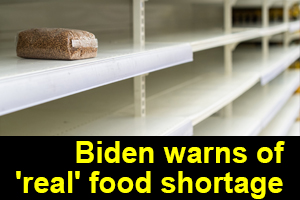

Illegal immigrants help fuel U.S. farms. Does affordable produce depend on them?
By Tamar Haspel Columnist, Food
March 17, 2017
If you haven’t delved into this question, you probably believe it’s virtually all immigrants, many of them illegal, because Americans don’t want to do those jobs and we don’t have enough legal ways to get foreigners here to do them.
If you have delved into the question, you know that’s absolutely true.
Estimates of the number of farmworkers employed in the United States vary. According to Robert Guenther, senior vice president for public policy for the United Fresh Produce Association, a produce industry trade group, it’s about 1.5 million to 2 million.
[Who makes the tortillas, pierogi and pasta you love? These immigrants do.]
Of those, a large portion is illegal. Again, estimates vary, but Guenther puts it at 50 to 70 percent, a wide range. The Department of Labor, in its National Agricultural Workers Survey, puts it at 46 percent.
No matter which estimate you accept, it’s a lot of people. And the Trump administration’s aggressive enforcement of immigration laws and promise to build a wall to keep more people from crossing the border illegally threaten the viability of the on-farm workforce.
If we lose the workers who are here illegally, it’s hard to see how they’ll be replaced, because Americans are reluctant to take these jobs, particularly the ones harvesting crops. There’s a lot of evidence for this, both anecdotal and statistical, including a particularly compelling case study done in North Carolina in 2011. That year, 489,000 people were unemployed statewide. The North Carolina Growers Association listed 6,500 available jobs. Just 268 of those 489,000 North Carolinians applied, and 245 were hired. On the first day of work, 163 showed up, and a grand total of seven finished the season. Of the mostly Mexican workers who took the rest of the jobs, 90 percent made it through to the end.
[Restaurants show diners what a day without immigrants tastes like — or doesn’t]
Lynn Jacquez, a D.C. lawyer specializing in immigration law, says, “There’s sufficient evidence that over the last 30-plus years there’s a dearth of U.S. workers that want to go into this field.” Whether the pun is intended, these jobs are acceptable only to people who have very few, very bad options.
The work is brutally hard. Ricardo Salvador, who is director of the food and environment program for the Union of Concerned Scientists, and whose family includes farmworkers, described a typical day to me. (I tried to talk with a farmworker directly, but the political environment has made many very reluctant to speak with the press.)
Days often begin in the middle of the night — say, 3 a.m. — to leave enough time to get to a pickup point (a parking lot or vacant lot), be picked up (or not — the labor contractors who collect workers and deliver them to farms generally don’t take all of them), and get trucked to the worksite. Each crop is different; you’re stooping to pick (fruits like strawberries) or cut (vegetables like broccoli) essentially nonstop, usually with pressure to keep up with a truck that’s collecting the harvested produce. If you fall behind, you could get kicked out and lose both a day’s wages and a ride home. Conditions vary, of course, but there are often very limited breaks.
“It’s not just the physical stress,” says Salvador. “It’s the psychological stress. You have to keep up, you can’t afford to lose this job.”
And the pay? Between $10 and $12 an hour, generally. Sometimes a bit more, sometimes less. But, because there isn’t year-round work, according to Salvador, “these families are earning $10,000 a year.”
It is disconcerting that two different scenarios, one threatening to farmworkers, one supportive of them, could have a similar effect in our food system. The threatening scenario is a restriction of the labor force driven by immigration enforcement. According to both Guenther and Jacquez, that force is already shrinking, in part because of enforcement under the Obama administration, but also because better conditions in Mexico reduce the incentive to come here, and the aging workforce isn’t being adequately replaced. This has put pressure on the sector, which has boosted competition for laborers and raised wages in some places. Stepped-up efforts to close the border, combined with the ongoing aggressive effort to deport people who are here illegally, would increase that pressure.
The supportive scenario looks very different. Many U.S. produce buyers (including me) would like to see the people who bring our fruits and vegetables out of the fields work in decent conditions and earn family-sustaining wages, a situation that could be brought about by legislation (including minimum wage and immigration reforms), collective bargaining, or both.
Either scenario (and, in this political climate, we can hazard a guess as to which is more likely) would raise prices. So it makes sense to ask: What happens when labor prices increase? What if we raise pay from the current rates — about $12 an hour — to, say, the minimum wage that many are advocating, $15 an hour?
I checked in with a few agricultural economists — Jayson Lusk at Oklahoma State University, Philip Martin at the University of California at Davis, and a USDA economist who spoke on the condition of anonymity because public statements would require agency authorization — to understand how that change would reverberate through the food supply.
A wage increase will mostly affect fruits and vegetables, because commodity crops — corn, soy, wheat, cotton, and others — are highly mechanized, so most of the work is done by machines.
With produce, about a quarter of every dollar we spend at the supermarket goes to the farmer. A third of that quarter — about 8 cents of your produce dollar — goes to the farmworker.
If wages increased 25 percent (from $12 to $15), and that cost were passed on to us, produce prices would rise 2 to 3 percent. The yearly impact would be in the range of $30 per household, certainly affordable for many but not for all.
But would the costs get passed on to us? It’s a critical question, and it’s hard to answer. Small increases might, but the supply chain might also respond in other ways. Martin told me in an email that “historically, rising ag wages led to labor-saving mechanization or imports, and food cost as a share of household spending has been falling.” If that’s what happens, you won’t see that increase in the grocery store because either farmers invest in machinery to reduce labor costs or the supply chain turns to imports. That means smaller farmers, without the economies of scale to support mechanization, are going to have the hardest time.
The larger the increase, the greater the likelihood that the supply chain looks elsewhere, the larger the threat to farms and farmworkers. Everyone I’ve spoken to on this issue wants to see a system that allows for workers to come here to make sure our crops make it out of the field and into the stores. If we don’t have these workers, we risk food rotting in fields and farmers on the margins going out of business. Nobody wants to see an immigration crackdown that leads to that.
But what about the supportive scenario, an across-the-board increase in farmworker wages? If that cost gets passed along, it would increase produce prices commensurately, and making the most healthful foods in our diet even a little more expensive is tough on the consumers least able to afford them. (Although Salvador points out that, if those consumers also earned $15 an hour, we might not have that problem.) If it makes the supply chain look elsewhere for green beans, it could jeopardize the livelihood of farmers and farmworkers alike.
I’m fortunate enough to be able to afford fresh vegetables, and I’m willing to pay more to make sure everyone along the way lives decently. But I also want to safeguard the spinach for our most vulnerable. There’s no easy answer.
In order for farmworkers to be paid wages that make it viable to support a family, American produce buyers have to ask what they’re willing to pay. While many lower-income consumers have trouble affording fresh produce even at the current levels, higher-income buyers may be willing to pay slightly more. Americans are paying more attention to our food’s provenance, and pressure for more attention to animal welfare and environmental responsibility is forcing change throughout the food chain. If we want farmworkers to live decently, it is us, the eaters, who need to pay.
Download







